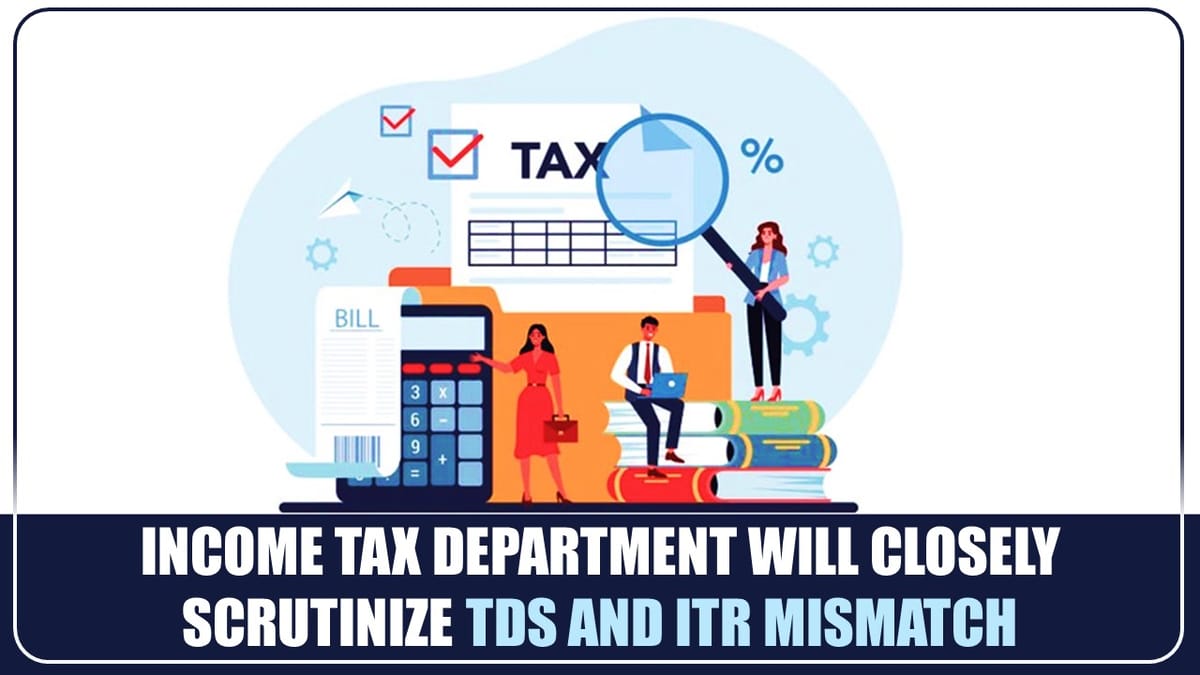A mismatch between what an employer calculates and what an employee claims can expose both to the scrutiny of the taxman.
Priyanka Kumari | Dec 26, 2023 |

Income Tax Department to closely scrutinize TDS and ITR mismatch for Salary
A mismatch between what an employer calculates and what an employee claims can expose both to the scrutiny of the taxman.
The Income Tax department is examining the yearly IT returns for tax discrepancies deducted at source, or TDS, by companies and employee declarations. A line-by-line reconciliation of the two sets of data under several headings has already occurred: house rent allowance, medical insurance, outgoing home loans, tax-saving investments under 80c, and so on.
Several companies in Mumbai, Delhi, and other major cities were sent notices at the beginning of December under Section 133C, which was implemented in 2014-15 and allows authorities to request information to verify details. Companies are required to either “confirm the information” or “provide a correction statement.”
The department’s goal is to identify cases where tax has escaped due to either the company deducting less TDS than it should have or employees claiming refunds through additional investment declarations that were not disclosed earlier in the year but were later included when finalising the ITRs.
“Section 133C (introduced in 2014-15) has been used sparingly thus far.” However, various companies have recently received notices under this section. This would allow for line-by-line verification.
The government has made the best possible use of technology by allowing the system to perform granular-level verification of reporting by both the deductors in their withholding tax returns and the taxpayers in their ITRs.
The department is most likely well aware of the restrictions. For a large number of taxpayers, such an exercise is not practicable manually. As a result, a system-related verification is being conducted to detect loopholes.
Only the appropriate situations must be selected for investigation, whether at the company or personnel level. This could contribute to a less risky approach to withholding tax compliances, with correct validations at the level of employers (the deductors), correct claims by taxpayers, an increase in tax collection, and a broadening of the tax base through a fair selection of the old and new tax regimes for individuals.
The employer is responsible under the law for appropriately computing and reporting the TDS of employees every quarter. However, employers have typically not focused on thoroughly validating employee declarations; in some situations, individuals may fail to produce the actual documents on time.
Furthermore, service providers, several of whom are software companies to whom companies often outsource payroll processing, do not perform proper reviews.
This is a useful tool for identifying false statements. The parties who receive the notices must respond immediately since there is a penalty provision for failing to respond. If the amount of data necessary is large, an adjournment should be requested. Parties should take it seriously.
Unexpectedly, if employees file false claims and their employers approve them, a loophole in the tax office system will not be easily apparent. However, any difference between the two sets of data would be obvious. If a case is taken up by the tax office, it will likely go through all employee records.
In case of any Doubt regarding Membership you can mail us at contact@studycafe.in
Join Studycafe's WhatsApp Group or Telegram Channel for Latest Updates on Government Job, Sarkari Naukri, Private Jobs, Income Tax, GST, Companies Act, Judgements and CA, CS, ICWA, and MUCH MORE!"